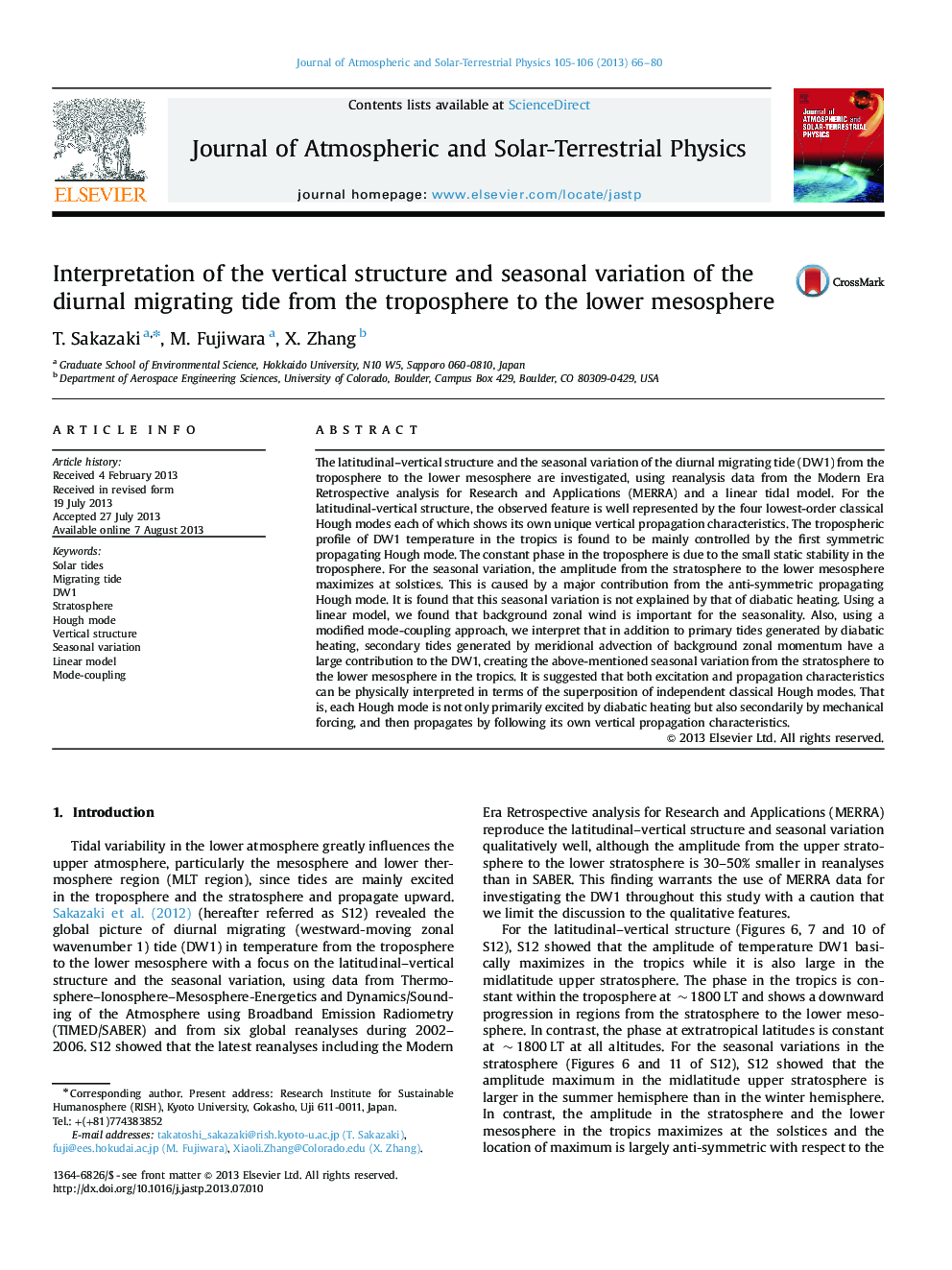| کد مقاله | کد نشریه | سال انتشار | مقاله انگلیسی | نسخه تمام متن |
|---|---|---|---|---|
| 8140317 | 1523632 | 2013 | 15 صفحه PDF | دانلود رایگان |
عنوان انگلیسی مقاله ISI
Interpretation of the vertical structure and seasonal variation of the diurnal migrating tide from the troposphere to the lower mesosphere
ترجمه فارسی عنوان
تفسیر ساختار عمودی و تنوع فصلی ماه غروب آفتاب روزانه از تروپوسفر تا مزارعه پایین تر
دانلود مقاله + سفارش ترجمه
دانلود مقاله ISI انگلیسی
رایگان برای ایرانیان
کلمات کلیدی
موضوعات مرتبط
مهندسی و علوم پایه
علوم زمین و سیارات
فیزیک زمین (ژئو فیزیک)
چکیده انگلیسی
The latitudinal-vertical structure and the seasonal variation of the diurnal migrating tide (DW1) from the troposphere to the lower mesosphere are investigated, using reanalysis data from the Modern Era Retrospective analysis for Research and Applications (MERRA) and a linear tidal model. For the latitudinal-vertical structure, the observed feature is well represented by the four lowest-order classical Hough modes each of which shows its own unique vertical propagation characteristics. The tropospheric profile of DW1 temperature in the tropics is found to be mainly controlled by the first symmetric propagating Hough mode. The constant phase in the troposphere is due to the small static stability in the troposphere. For the seasonal variation, the amplitude from the stratosphere to the lower mesosphere maximizes at solstices. This is caused by a major contribution from the anti-symmetric propagating Hough mode. It is found that this seasonal variation is not explained by that of diabatic heating. Using a linear model, we found that background zonal wind is important for the seasonality. Also, using a modified mode-coupling approach, we interpret that in addition to primary tides generated by diabatic heating, secondary tides generated by meridional advection of background zonal momentum have a large contribution to the DW1, creating the above-mentioned seasonal variation from the stratosphere to the lower mesosphere in the tropics. It is suggested that both excitation and propagation characteristics can be physically interpreted in terms of the superposition of independent classical Hough modes. That is, each Hough mode is not only primarily excited by diabatic heating but also secondarily by mechanical forcing, and then propagates by following its own vertical propagation characteristics.
ناشر
Database: Elsevier - ScienceDirect (ساینس دایرکت)
Journal: Journal of Atmospheric and Solar-Terrestrial Physics - Volumes 105â106, December 2013, Pages 66-80
Journal: Journal of Atmospheric and Solar-Terrestrial Physics - Volumes 105â106, December 2013, Pages 66-80
نویسندگان
T. Sakazaki, M. Fujiwara, X. Zhang,
